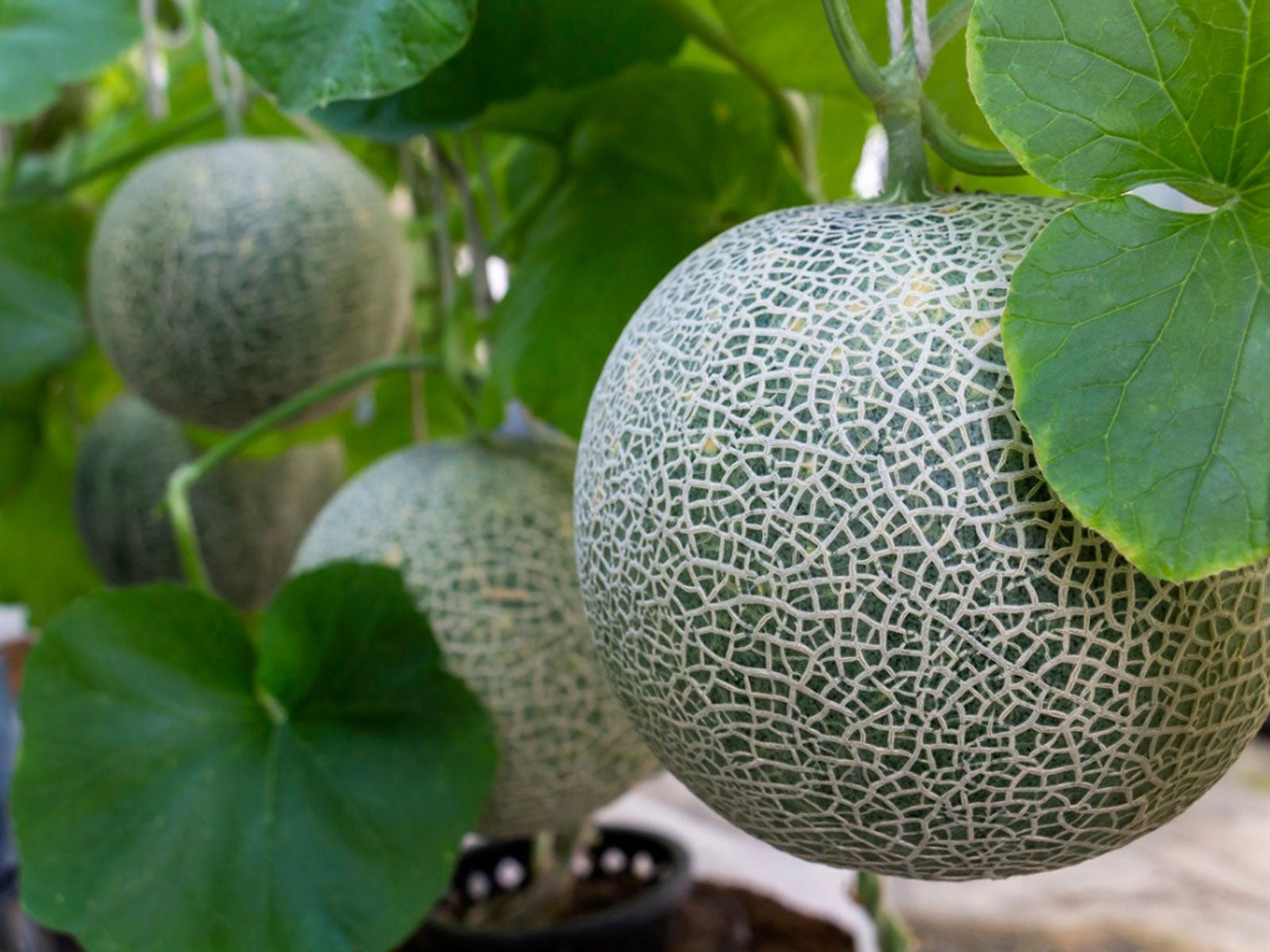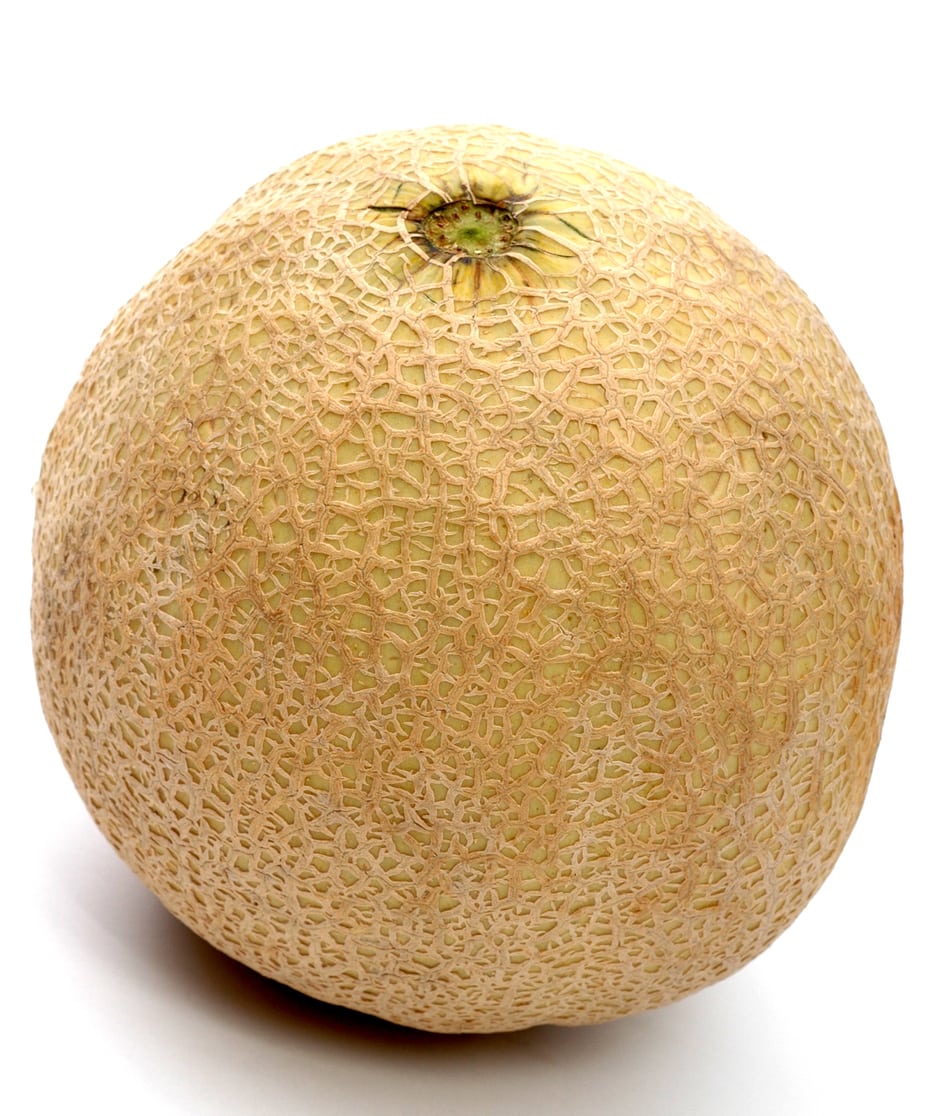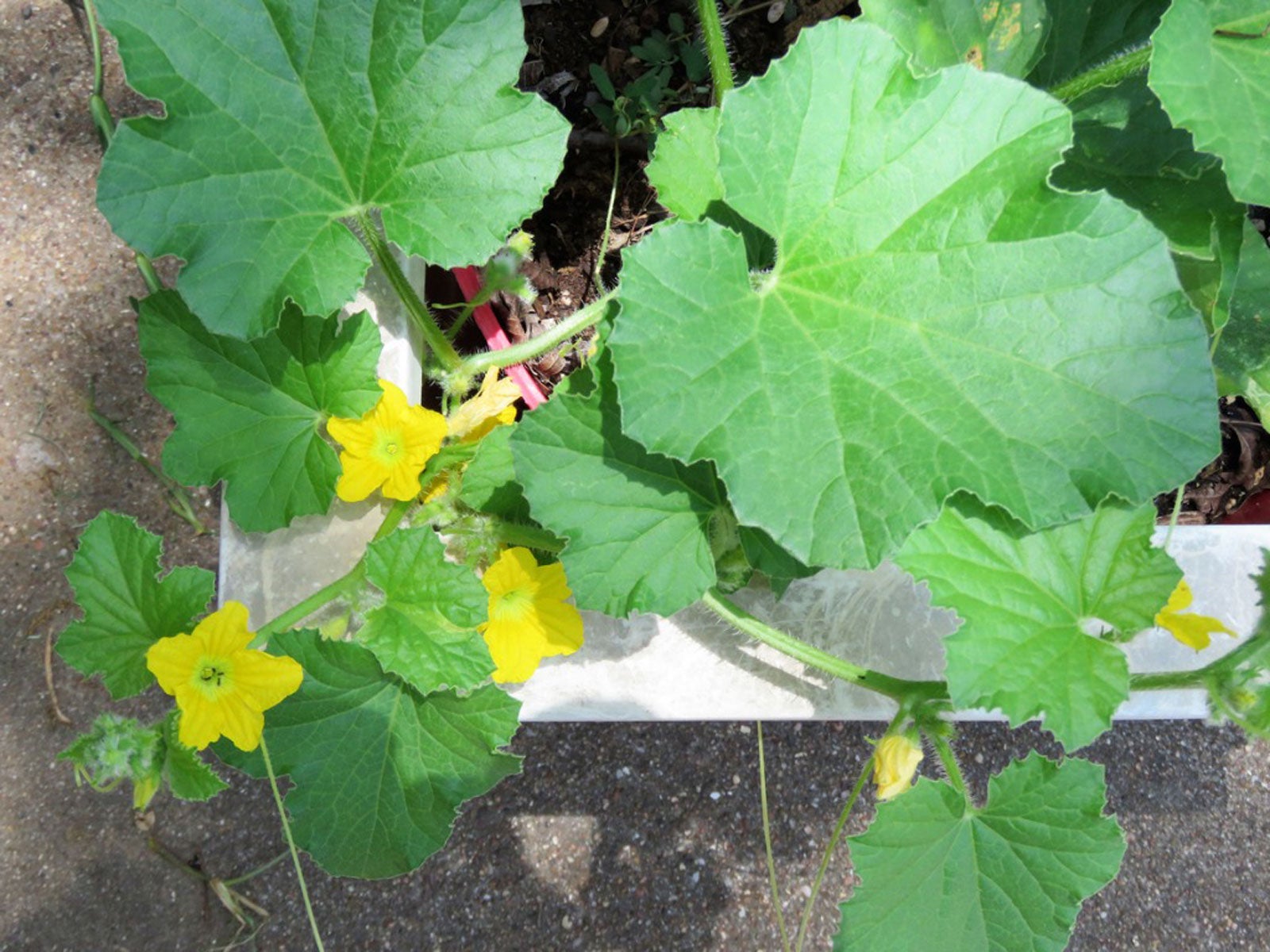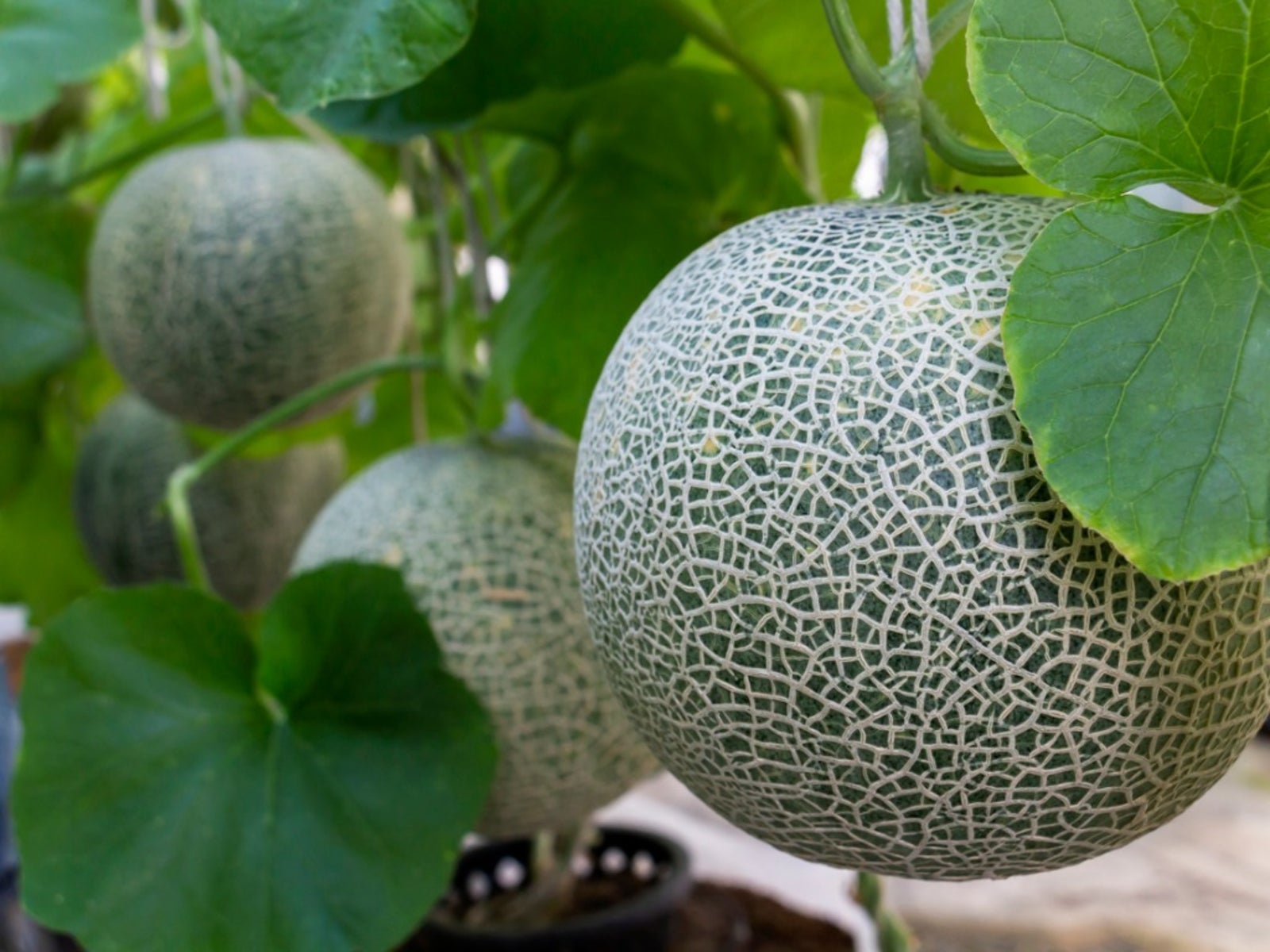Cantaloupe On A Trellis: How To Grow Cantaloupes Vertically

If you’ve ever had a freshly picked, ripe cantaloupe vs. one purchased at the supermarket, you know what a treat it is. Many gardeners opt out on growing their own melons due to the space a sprawling melon patch takes up, but that’s where growing a cantaloupe vertically on a trellis comes in to play. Trellised cantaloupes utilize a much smaller portion of the garden, allowing even those with limited space to grow their own. Intrigued? Read on to find out how to grow cantaloupes vertically and other information about growing vertical cantaloupe melons.
Why Grow Vertical Cantaloupe Melons?
As mentioned, cantaloupes can take up a good chunk of the garden, around 3 to 4 feet (1 m.) between plants and a potential sprawl of 20 feet (6 m.)! With more and more people on the planet, space is at a premium in the garden and out. Many gardeners have to come up with creative solutions in order to grow crops on postage stamp sized plots. Growing cantaloupes vertically allows gardeners with even the smallest garden area to enjoy the fruits of their labor. Another benefit of growing upward rather than outward is ease of harvest. In a traditional melon patch, the gardener finds their self doing some sort of garden yoga, twisting and stretching to get a gander at how close they are to harvesting. Also, growing a cantaloupe on a trellis will keep the fruit clean and resistant to chewing pests, as well as keeping the foliage dry, thus less susceptible to disease. Lastly, have you ever tried to weed a sprawling melon patch? It’s nearly impossible but it’s easy to weed beneath trellised cantaloupes. So don’t let the size of a melon patch deter you. Grow trellised cantaloupes and take advantage of that vertical space.
How to Grow Cantaloupes Vertically
A vertical trellis can be made out of a myriad of materials, but in the case of growing cantaloupe, you want to be sure that whatever you select is sturdy. Remember, you’re dealing with heavy, dense fruit and very long vines, so there is some significant weight to support. Some strong materials you might consider include concrete reinforcing wire mesh, hog fencing, welded wire, and livestock panels. You also want something that will create tight enough gaps for the vines to clamber upon. Consider whether you are making a tall trellis or arbor, or whether you just want a shorter vertical support. If you are making an arbor, the arch will need extra strength so some PVC pipe might be in order. You will also need solid posts upon which to secure the support material. U-posts, or other steel posts should fit the bill, or even solid wood posts. Once you have the vertical support constructed over your melon hill, be sure it is securely zip tied or otherwise wired together. As the vines grow, they should naturally entwine in and around the support. Use old nylons, pieces of t-shirt, or other scrap cloth to create slings for the melons as they mature; otherwise, they will get too heavy and drop from the vine. Keep the slings tight enough to support the cantaloupe but with enough give to allow room for the melon to grow.
Gardening tips, videos, info and more delivered right to your inbox!
Sign up for the Gardening Know How newsletter today and receive a free copy of our e-book "How to Grow Delicious Tomatoes".

Amy Grant has been gardening for 30 years and writing for 15. A professional chef and caterer, Amy's area of expertise is culinary gardening.
-
 Looking For Plants To Give You The Soft And Fuzzies? Try These 5 Fuzzy Leaf Plant Options
Looking For Plants To Give You The Soft And Fuzzies? Try These 5 Fuzzy Leaf Plant OptionsLovers of texture, drama, silver foliage and tactile plants will adore these special sensory garden additions. These fuzzy leaf plant options will leave you all aglow
By Susan Albert
-
 Get Ready For A Summer Of Hummers! Grow These Full Sun Hummingbird Plants and Flowers
Get Ready For A Summer Of Hummers! Grow These Full Sun Hummingbird Plants and FlowersIf you’re lucky enough to enjoy a sunny backyard, make sure you are maxing out on your pollinator opportunities and grow these full sun hummingbird plants and flowers
By Tonya Barnett
-
 How To Prune Cantaloupe Vines: Is Cutting Back Cantaloupes Effective
How To Prune Cantaloupe Vines: Is Cutting Back Cantaloupes EffectiveCutting back cantaloupe plants is generally not necessary, although pruning cantaloupe plants does have some benefits. Click here to learn more.
By Amy Grant
-
 Athena Melon Fruit: What Is An Athena Melon Plant
Athena Melon Fruit: What Is An Athena Melon PlantAthena melon fruit are cantaloupe hybrids prized for their consistent early yields as well as for their ability to store and ship well. Interested in growing Athena melons? Click the following article to learn about the growing and care of Athena melons.
By Amy Grant
-
 Container Grown Cantaloupe: Care Of Cantaloupe In Pots
Container Grown Cantaloupe: Care Of Cantaloupe In PotsCan I grow cantaloupes in a container garden? This is a common question, and space-challenged melon lovers are happy to learn that the answer is a resounding yes, you can grow cantaloupe in pots with proper growing conditions. Click here for more info.
By Mary H. Dyer
-
 How & When To Pick Cantaloupe For Perfectly Ripe Melons
How & When To Pick Cantaloupe For Perfectly Ripe MelonsKnowing the right time to pick a cantaloupe can mean the difference between a good crop and a bad one. Follow the tips in this article to harvest the best cantaloupe fruits possible.
By Bonnie L. Grant
-
 Planting Cantaloupe - How To Grow Cantaloupe Melons
Planting Cantaloupe - How To Grow Cantaloupe MelonsThe cantaloupe plant, also known as muskmelon, is a popular melon that is commonly grown in many gardens. Learning how to grow them successfully is easy using the following information.
By Nikki Tilley